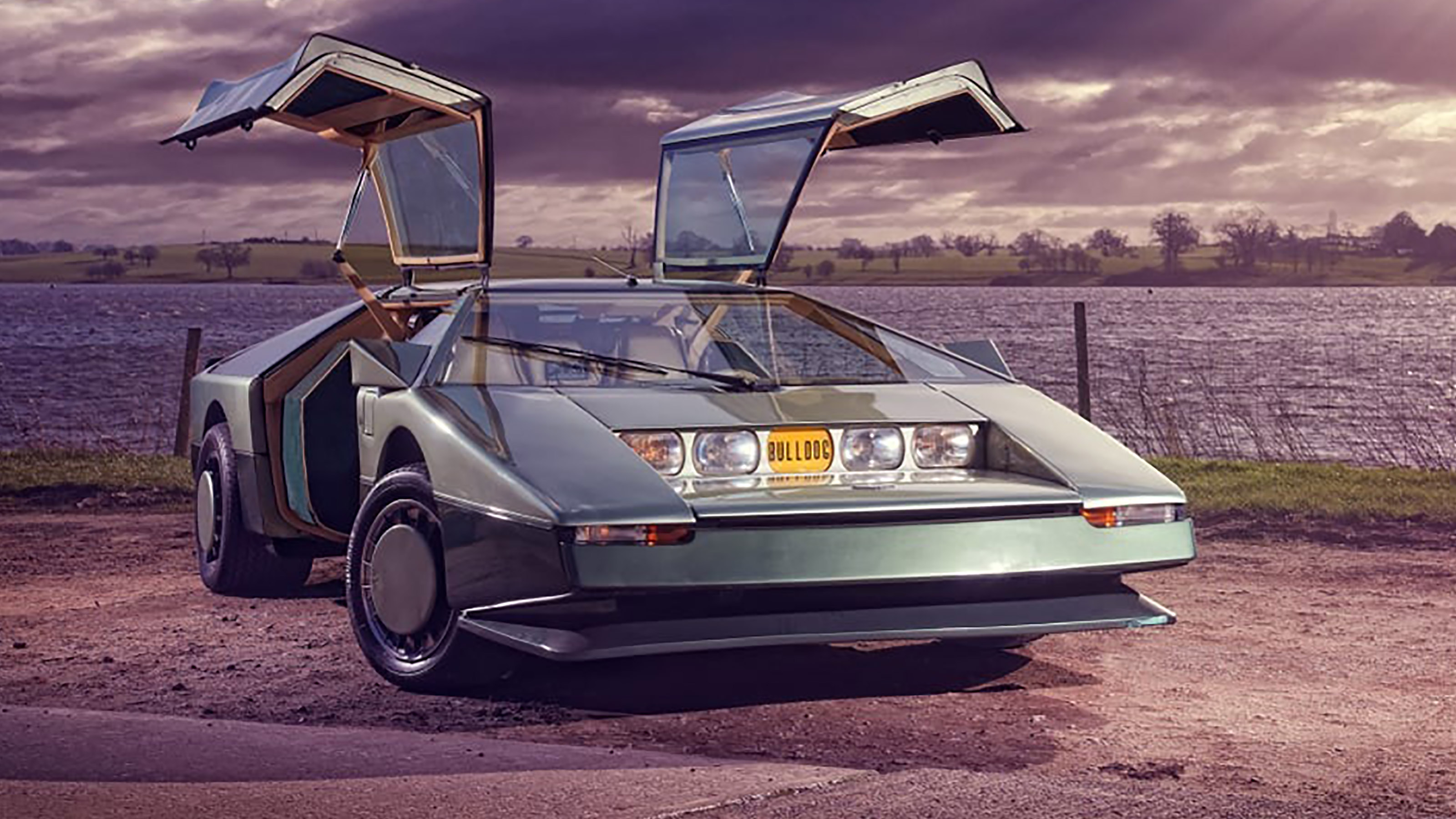Who named Aston Martin's supermodel Bulldog; What happens to the Bulldog?
While British Aston Martin wanted a "supermodel" to be produced both very quickly and in limited numbers, it developed the Bulldog. However, only one was produced and it took 45 years to reach its target!

Recently, the news fell on British automobile sites, especially. A strange car called the Aston Martin “Bulldog” had accelerated to 205 miles per hour (328 km/h). Sure, that might sound like a lot of "mosquito buzz" for today's super sports cars, but it was a "matter of honor" for the Bulldog and its current owners. Because the vehicle was able to reach its “production target” exactly 45 years after it was produced.
Aston Martin Lagonda Global Holdings PLC is a British manufacturer of luxury sports cars and grand tourers. Its predecessor was founded in 1913 by Lionel Martin and Robert Bamford. Steered in 1947 by David Brown, it became associated with expensive grand touring cars in the 1950s and 1960s, and with the fictional character James Bond following his use of a DB5 model in the 1964 film Goldfinger.
In fact, the "Bulldog" was a product of the "sharp-cut supercars" trend of the late 1970s. The "Lagonda", the sedan car that Aston Martin was "beyond its time", was not very "foreign" among cars such as Lamborghini Countach, Lotus Esprit, and DeLorean. Aston Martin wanted to offer luxury with the Lagonda and a super sports car worthy of the 1980s with the Bulldog. In fact, this car should have been able to accelerate to over 320 km / h and "show its day" to other brands. So, what the company's newly opened Newport engineering center can do...
Their sports cars are regarded as a British cultural icon. Aston Martin has held a Royal Warrant as purveyor of motorcars to Charles III since 1982, and has over 160 car dealerships in 53 countries, making it a global automobile brand.
Bad luck begins
Bulldog, whose project name was "DPK901" (according to some, "K9", the name of the robot dog of the popular British TV series character Doctor Who at the time), was developed on the basis of Lagonda. William Towns, who designed Lagonda, made the design of the vehicle, which is planned to be produced in 20-25 units. The name was given by Alan Curtis, the manager of Aston Martin, who loved the "mink" Bulldog aircraft of the Scottish aviation company: Bulldog...
However, the misfortunes of the vehicle started even during the development phase. As a matter of fact, Mike Loasby, who carried out the first development studies and was the Chief Engineer of the brand, moved to DeLorean in 1979 after 3 years and left Bulldog alone. This project excited Curtis and the factory workers as another team carried out the remaining development work. Besides the “gull-wing” doors, it had a headlight structure not found on any other vehicle. As a matter of fact, 5 headlights lined up side by side were located in the middle of the hood and were "hidden". The middle part of the hood was coming down and the headlights were revealing. The leather and wood veneers used inside, as well as the LED buttons, were sourced from Lagonda.
The car was officially introduced at a hotel on March 27, 1980. The company planned to produce between 15 and 25 of these cars. However, Victor Gauntlett took over Aston Martin in 1981 and canceled the project, saying he found it too costly. The Bulldog was left “one” and undesirable. This unique vehicle was then sold to a collector in the Middle East for £130,000 in 1984. The new owner added an interior rearview mirror and camera to this car. However, he was very battered here, and it was said that his engine exploded. Then the Bulldog went to America and stayed indoors for years in different places.
He showed up in 2009 and attended the "Goodwood Festival of Speed" event in England, and then the party at Kensington Park Gardens, where the brand's 100th anniversary was celebrated in 2013.
Broke the devil's leg
The restoration process of the car, which was purchased by an American again in 2020, has begun. The person who undertook this job was actually the son of a familiar name to the brand and Bulldog. Richard Gauntlett, aka the son of former owner Victor Gauntlett, brought Aston Martin back into existence.
Originally a combination of silver and light gray, its color has been changed to green. The interior upholstery has also been changed from dark brown to light tan. While the chassis was strengthened during the restoration of the car, the original 5.3 liter V8 engine was completely rebuilt and modified to increase its volume to 5.7 liters. Two turbochargers were also added, while Weber carburetors were used instead of fuel injection. It had become producing 650 HP.
While it was announced that the target of "over 200 miles per hour (322 km/h) speed" (or even 237 miles per hour, 381 km/h in theory), which was put forward at the time the vehicle was first built, 162 miles/h (261 km/h) will be achieved in the first attempt in 2021. ) remained at speed. And lastly, he was once again piloted by Aston Martin racer Darren Turner, on the track of the NATO base. And in the trial there, Bulldog reached a speed of 205 mph, or 238 km/h. It will be proudly remembered from now on...
